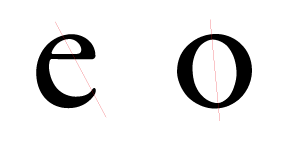Logo and Identity Process
In the first days of the new year I have been cleaning the studio. Having rediscovered this identity system from very early days, almost 4 decades back and I was thinking about the graphic design process then and today. It occurs to me that even though the tools-technology has evolved the graphic design discovery and design development process remains the same. Now thirty four years later, with all the new and many ways to advertise and promote a business, still the basic project information questions asked and answered face to face is what makes a graphic design project fun work and puts client and designer on the path to achieve a successful logo solution.
This letters and words logo and the eventual business stationery package that was created is based on a very brief but focused 20 minute consultation.
The above graphic is a a logo specification sheet originally created for a CPA partnership back in 1980’s, as part of the logo and identity package delivered.
A very basic need for a business card was what had started the graphic design project ball rolling.
Ed and Jim stepped into a Rainer Avenue print shop and were brought to the back of the shop past the clanking one and two color duplicator presses and the sometimes blinding plate burning area, into the 10 by 20 foot area that contained a horizontal process camera, drawing board, light-table on top of a flat file cabinet, one standard two drawer file cabinet, t-square, triangles, metal-cork back ruler, pica poles, x-acto knife, brush & pen collection, 1/2 gallon of rubber cement, rubber cement pint jar with brush, push button phone, fax machine, type sample books, paper sample books, sketch pads, roll of tracing paper, pasteup boards and one graphic-artist/camera-operator/stripper-flatter/type-specifier/plate-maker/paste-up/designer, just 6 months out of University, me.
All three of us were both just starting out. After introducing ourselves, one of the first question I asked “do you have a logo?” The answer being “NO” on the logo question and then the next question was “do you have a company name?” followed by “well what did you write on your business license application?”
Asking Ed and Jim about business with my checklist of 20 questions made possible a face to face conversation of discovery about their business needs, expectations, what major idea they wanted to communicate. Today these question are the same.
Discovery questions about Who, What, Where, When, How…
Who they wanted to communicate to, or the target audience profile in current mar-com terminology. What the business is about, why some one would want it, can you support that, who is your competition, and what about them. Then on to the creative consideration and direction the defining questions.
The telling question “If you could choose only one thing the viewer would remember what would it be?”
The key follow up questions:
What are you trying to communicate, and why?
Who needs this information and why?
What does this audience already know?
What does this audience need to know?
What single, unique, focused message should the audience walk away with after reading this piece?
What have you done to communicate this information before?
How do you expect your audience to respond to this communication? How will you in turn respond to your audiences response?
Will the audience receive the same information in any other form or media from your organization as part of a campaign?
Does the audience want this information? Do they not want it? Do they care?
These common kind of project question were the ice breakers to getting the client talking about their business dream, and as a designer a method for gathering valuable insight. It seemed back then a basic trust was built in this first twenty minute face to face conversation.
With four followup meetings to explain and review designs concepts, colors, discuss paper choices, and the rest of the project details, a utilitarian and simple but appropriate letters and word logo graphic design solution resulted.
See Below




















